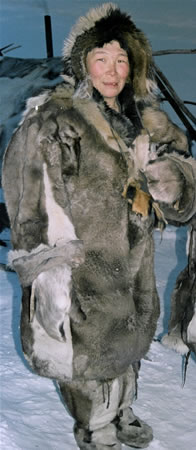Arctic Survival – Sleeping Pads
In cold conditions it is essential to use a sleeping mat or pad to insulate your body from the ground. The best sleeping bag in the world will not keep you warm if it is placed directly over the ice. There are a variety of sleeping mats adequate for Arctic conditions.
Thermarest sleeping pads and the various imitations is probably the most common design in use. These pads in theory are self-inflating with light open-cell foam providing insulation and loft. In cold conditions the mats do not self-inflate, and it is necessary to inflate by mouth. The manufacturers recommend against this because of moisture issues, instead advising that you warm the mat with body heat. In temperatures below -40 Celcius almost no body heat is released through your clothing, so this means it is necessary to strip naked and flop your body over your Thermarest for a good twenty minutes. We prefer to inflate by mouth. A small hand pump could be a viable alternative.
The big danger with inflatable sleeping pads is the risk of puncture. A flaccid Thermarest makes for a very miserable night. Be sure you have the means to repair holes.
Do not use an air mattress for a sleeping pad, as they do not provide sufficient insulation.
Closed Cell Foam: These are generally considered the low-tec/budget mats. An ultra-thick closed-cell foam mat will do the job, however, and has the distinct advantage of being indestructible.
Caribou/Reindeer Skins: These unconventional sleeping mats provide warmth and comfort leagues above anything you will find in the camping store. The stiffness of reindeer fur means that it will not compress under your body weight, and provides unparalleled insulation and comfort. A night on a caribou skin is the Sealy Posturepedic of the North, and is what the original inhabitants have been using for thousands of years.
The disadvantage of reindeer skins is they are heavier and bulkier than the synthetic sleeping mats. If you do use reindeer skin, be sure it comes from a source that harvests the animals legitimately and sustainably. We used reindeer hides in Siberia which were given to us by the Chukchi people who managed domestic reindeer stock.

